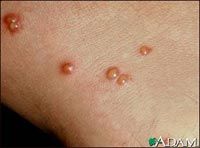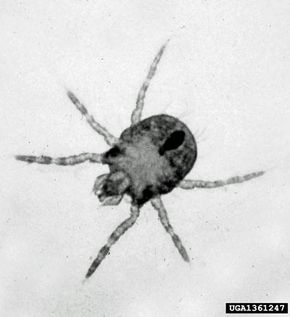The Chigger's Quest for Food
Chigger larvae can hatch in the spring, summer or early fall. Newly hatched chiggers have one goal -- to find a meal. They are parasitic, and their meal has to come from the skin of a host. A chigger's host can be just about any vertebrate animal, and the meal takes up to four days to complete.
Finding a food supply that will allow it to eat for four days may seem like an insurmountable task for a nearly microscopic, larval life form. But chiggers have several instinctive behaviors that help them find food:
Advertisement
- Light sensitivity: Chiggers move toward shady areas. This protects them from the sun, which can dry out their bodies. Also, when a potential host casts a shadow in a chigger-infested area, chiggers can flock toward it.
- Temperature sensitivity: Once a chigger comes into contact with its host's skin, it detects the host's body heat.
- Touch sensitivity: Tiny, hairlike sensory organs cover a chigger's body. These organs help chiggers find hosts and find a good place to feed. They also help chiggers find each other -- chiggers may form clusters because they can feel one another with their sensory hairs.
- Upward mobility: Chiggers like to climb. They will climb into vegetation and wait for hosts to brush past.
- Questing response: Like ticks, chiggers use a posture called questing to find food. In the right conditions, chiggers will stand with their front legs outstretched so they can grasp potential hosts. Shadows and vibrations tend to provoke the questing response.

These behaviors all help chiggers find hosts, but finding a host is only half the problem. Chiggers also have to find places to feed where they won't be brushed or groomed away. On top of that, the skin in the feeding area has to be thin, because a chigger's microscopic mouthparts can't get through tough, leathery skin. Chiggers often attach themselves to pores or hair follicles or any other natural depression in the skin.
Women and children are more prone to chigger bites than men are because men generally have thicker skin. This is also why people often get chigger bites behind their knees, in their armpits and in other areas where the skin is soft and delicate. Waistbands and other parts of clothing can protect feeding chiggers, which is why people often find clusters of bites there.
Chiggers can crawl over a host's body for hours before settling down to eat. Next, we'll look at what happens when they do.
